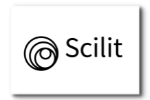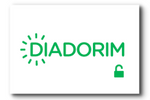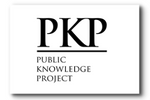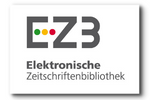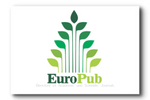Antioxidant activity, total phenolics, total flavonoids and phytochemical screening of Solanum sanctae-catharinae Dunal (Solanaceae) aerial parts
DOI:
https://doi.org/10.55892/jrg.v8i18.1974Keywords:
DPPH, TAC, Polyphenols, Alkaloids, SteroidsAbstract
Solanum sanctae-catharinae Dunal it’s a native tree from Brazilian Atlantic Forest. The Solanum genus comprises numerous species that have been found to exhibit antidiabetic, antitumor, and antimalarial properties. The current study seeks to assess the antioxidant properties, of crude extracts and crude extracts fractions of S. sanctae-catharinae aerial parts. The Folin-Ciocalteu method and the aluminum-trichloride method were used to determine TPC and TFC in crude extracts and fractions of aerial parts. Two assays were conducted to evaluate antioxidant activity: the DPPH test and the phosphomolibdenium method. Differences between sample means and control groups were determined using ANOVA (one way) with Tukey’s test coupled. Correlations were obtained using the Pearson correlation coefficient for bivariate correlations. Our findings shown that the remnant fraction of the ethanolic crude extract demonstrates the most relevant antioxidant activity, followed by the chloroform fraction of the ethanolic crude extract, the remnant fraction of the ethanolic-acetic crude extract. The presence of secondary metabolites such as phenols, flavonoids, coumarins, and alkaloids in S. sanctae-catharinae phytochemical screening suggest that this antioxidant activity can be attributed to the presence of this secondary metabolites. Furthermore, the results indicate a substantial quantity of polyphenols and flavonoids in both extracts.
Downloads
References
ZEHIROGLU, C. O.; SARIKAYA, S. B. The importance of antioxidants and place in today’s scientific and technological studies. Journal of Food Science and Technology, v. 56, p. 4757-4774, 2019.
GIANAZZA, E.; BRIOSCHI, M.; MARTINEZ FERNANDEZ, A.; CASALNUOVO, F.; ALTOMARE, A.; ALDINI, G.; BANFI, C. Lipid peroxidation in atherosclerotic cardiovascular diseases. Antioxidants & Redox Signaling, v. 34, p. 49-98, 2021.
KAUNDA, J. S.; ZHANG, Y. J. The Genus Solanum: An Ethnopharmacological, Phytochemical and Biological Properties Review. Natural Products and Bioprospecting, v. 9, p. 7-137, 2019.
MILNER, S. E.; BRUNTON, N. P.; JONES, P. W.; O’BRIEN, N. M.; COLLINS, S. G.; MAGUIRE, A. R. Bioactivities of glycoalkaloids and their aglycones from Solanum species. Journal of Agricultural and Food Chemistry, v. 8, p. 3454-3484, 2011.
SHAH, V. V.; SHAH, N. D.; PATREKAR, P. V. Medicinal plants from Solanaceae family. Research Journal of Pharmacy and Technology, v. 6, n. 2, p. 143-151, 2013.
IRDA, F.; ASTRID, A.; SUKRASNO. Antioxidant capacities from different polarities extracts of three kinds of ginger using DPPH, FRAP assays and correlation with phenolic, flavonoid, carotenoid content. International Journal of Pharmacy and Pharmaceutical Sciences, p. 521-525, 2014.
GANDHIAPPAN, J.; RENGASAMY, R. Comparative study on antioxidant activity of different species of Solanaceae family. Advances in Applied Science Research, v. 3, p. 1538-1544, 2012.
PRAKASH, N. U.; BHUVANESWARI, S.; SRIPRIYA, N.; PRAMEELA, L.; BHAGYA, R.; RADHIKA, B.; AROKIYARAJ, S. Antioxidant activity of common plants of Northern Tamil Nadu, India. International Journal of Pharmacy and Pharmaceutical Sciences, v. 6, p. 128-132, 2014.
LOGANAYAKI, N.; SIDDHURAJU, P.; MANIAN, S. Atividade antioxidante de dois vegetais tradicionais indianos: Solanum nigrum L. e Solanum torvum L. Food Science and Biotechnology, v. 19, p. 121–127, 2010.
STEHMANN, J. R. et al. Solanaceae in Lista de espécies da flora do Brasil. Jardim Botânico do Rio de Janeiro, 2015.
MOREIRA, E. A. Marcha sistemática de análise em fitoquímica. Tribuna Farmacêutica, v. 47, n. 1, p. 1-19, 1979.
HOMEM, I. C. M.; SZABO, E. M.; MIGUEL, O. G. Mollinedia clavigera Tul. (Monimiaceae) phytochemical screening and leaves', stems' and essential oil's physical–chemical parameters determination. Visão Acadêmica, v. 16, n. 1, 2015.
MIGUEL, O. Ensaio sistemático de análise em fitoquímica. Apostila da disciplina de fitoquímica do curso de Farmácia da UFPR, Curitiba, 2003.
CARVALHO, J. L. D. S.; CUNICO, M. M.; DIAS, J. D. F. G.; MIGUEL, M. D.; MIGUEL, O. G. Termo estabilidade de processos extrativos de Nasturtium officinale R. Br., Brassicaceae por sistema Soxhlet modificado. Química Nova, v. 32, p. 1031-1035, 2009.
SUREK, M.; DE FÁTIMA COBRE, A.; FACHI, M. M.; SANTOS, T. G.; PONTAROLO, R.; CRISMA, A. R.; DE SOUZA, W. M. Propolis authentication of stingless bees by mid-infrared spectroscopy and chemometric analysis. LWT - Food Science and Technology, v. 161, p. 113370, 2022.
DEVEQUI-NUNES, D.; MACHADO, B. A. S.; BARRETO, G. D. A.; REBOUÇAS SILVA, J.; DA SILVA, D. F.; DA ROCHA, J. L. C.; UMSZA-GUEZ, M. A. Chemical characterization and biological activity of six different extracts of propolis through conventional methods and supercritical extraction. PLoS One, v. 13, n. 12, e0207676, 2018.
PRIETO, P.; PINEDA, M.; AGUILAR, M. Spectrophotometric quantitation of antioxidant capacity through the formation of a phosphomolybdenum complex: specific application to the determination of vitamin E. Analytical Biochemistry, v. 269, p. 337-341, 1999.
SALGUEIRO, F. B.; CASTRO, R. N. Comparação entre a composição química e capacidade antioxidante de diferentes extratos de própolis verde. Química Nova, v. 39, p. 1192-1199, 2016.
HOSSAIN, M. A. et al. In vitro total phenolics, flavonoids contents and antioxidant activity of essential oil, various organic extracts from the leaves of tropical medicinal plant Tetrastigma from Sabah. Asian Pacific Journal of Tropical Medicine, v. 4, n. 9, p. 717-721, 2011.
ELLIOTT, J. G. Application of antioxidant vitamins in foods and beverages: Developing nutraceuticals for the new millennium. Food Technology, v. 53, n. 2, p. 46-48, 1999.
HEIM, K. E.; TAGLIAFERRO, A. R.; BOBILYA, D. J. Flavonoid antioxidants: chemistry, metabolism and structure-activity relationships. Journal of Nutritional Biochemistry, v. 13, n. 10, p. 572-584, 2002.
MHATRE, M.; TILAK-JAIN, J.; DE, S.; DEVASAGAYAM, T. P. Evaluation of the antioxidant activity of non-transformed and transformed pineapple: a comparative study. Food and Chemical Toxicology, v. 47, n. 11, p. 2696-2702, 2009.
ISABELLE, M. et al. Antioxidant activity and profiles of common fruits in Singapore. Food Chemistry, v. 123, p. 77-84, 2010.
DANINO, O. et al. Antioxidant activity of 1,3-dicaffeoylquinic acid isolated from Inula viscosa. Food Research International, v. 42, p. 1273-1280, 2009.
BOUSLAMTI, M. et al. Total Polyphenols Content, Antioxidant and Antimicrobial Activities of Leaves of Solanum elaeagnifolium Cav. from Morocco. Molecules, v. 5, p. 4322, 2022.
MORANKAR, P.; JAIN, A. P. Extraction, Qualitative and Quantitative Determination of Secondary Metabolites of Aerial Parts of Clematis heynei and Solanum virginianum. Journal of Drug Delivery and Therapeutics, v. 9, n. 1-s, p. 260-264, 2019.
SABIR, S. M.; ROCHA, J. B. T. Antioxidant and hepatoprotective activity of aqueous extract of Solanum fastigiatum (false "Jurubeba") against paracetamol-induced liver damage in mice. Journal of Ethnopharmacology, v. 120, n. 2, p. 226-232, 2008.
ZADRA, M. et al. Antioxidant activity and phytochemical composition of the leaves of Solanum guaraniticum A. St.-Hil. Molecules, v. 17, n. 11, p. 12560-12574, 2012.
SADDIQE, Z.; MAIMOONA, A.; KHALID, S. Phytochemical analysis and anthelmintic activity of extracts of aerial parts of Solanum nigrum L. Natural Product Research, v. 27, n. 2, p. 205-211, 2013.
*This study was financed in part by the Coordenação de Aperfeiçoamento de Pessoal de Nível Superior – Brasil (CAPES) – Finance Code 001.












